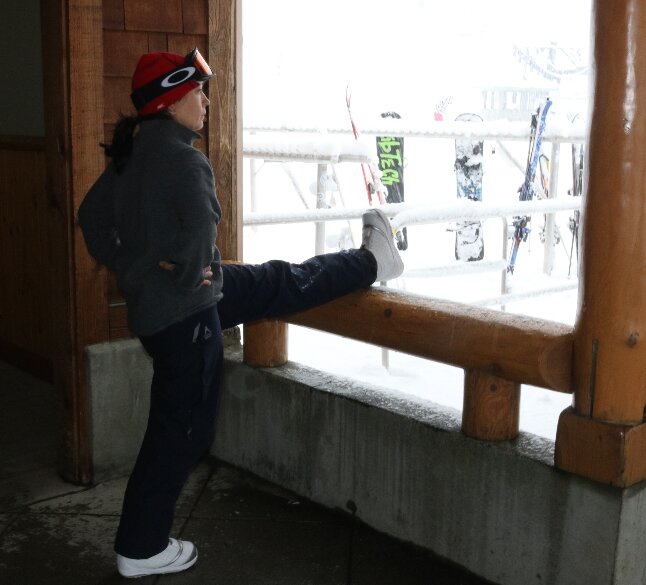
Snowboarding through powder snow has to be one of the world’s most fun activities. There is nothing like getting a shot of snow in the mouth while laughing as you bank another turn. Those turns are so addictive that snowboarders go even when they are feeling pain or feeling twisted.
As a certified Rolfer, I have worked on snowboarders for the last 10 years, helping them get untwisted from their asymmetrical riding stance so they can go back out and turn again and again.
It has been 14 years since I snowboarded regularly, but I still miss that whoosh feeling of turning on a sidewall. I wish I had known these simple tips I now give my snowboard clients to help them get untwisted and free of pain.
Many of my snowboard clients come suffering from back, knee, neck and shoulder pain. I am going to focus on knee and back pain in this article. I find some of the back and knee pain can be alleviated by simple leg stretches and by fine-tuning the way you skate on your board.
Apart from the fact that snowboarding is an asymmetrical sport, while riding at Mt. Baker we deal with a great deal of wet, heavy powder. By weighting the back leg to lift the nose, snowboarders put extra weight on the back leg quadriceps (the big muscles of the front of the thigh). If you have snowboarded heavy powder you can already feel that burn in the front of both of your thighs, but especially the back leg quad. Line up 10 powder snowboarders and I can tell you who is goofy and who is regular just by looking at the size of their respective thighs.
After hours on the hill, the muscle and connective tissue of the legs begin to stay shortened and twisted. It is our job to lengthen and untwist that muscle by stretching in the right direction.
Stretching is awesome unless you start stretching too aggressively in the wrong direction. You don’t need to stretch for hours to make a difference – just minutes. Before you get your boots on in the lodge or by your car, the easiest stretch to do is the standing quad stretch. Make this part of a daily routine, before and after riding. Stretch both legs, but focus especially on your back snowboarding leg.
Your front leg hamstrings (the muscles in the back of the leg) also need to be stretched. Once again, stretch both hamstrings, but spend a little extra time (not aggressively) on the front leg. The easiest way to stretch the hamstrings is to put your foot up on a table or chair and lean forward from the hips slowly. Don’t allow your knee to buckle.
In fact, play with stretching your hamstring by bending your knee to different degrees – this will stretch different parts of the back of your leg including your calf! In both of these stretches make sure your hip bones stay even. It is common to let one drop down as part of a pattern. These two stretches are very simple and quick, yet they can prevent or alleviate knee and back pain.
As a snowboarder you always spend some time skating to the lifts or through the flat spots if you didn’t get enough speed. So do you skate with your back leg in front or behind the board? Try putting your back leg behind the next time you go snowboarding. Feel the difference?
 Skating correctly
Skating correctlyWhen you skate with your back leg in front, you twist your hips and back inward in order to skate. If you put your back leg behind the board you keep your pelvis more even, and your knee and pelvis won’t get twisted. If you have never tried this it may feel awkward at first but by skating with your leg behind the board, you will save your knees and back with your body in alignment.
I used to think pain was a tragedy. I now believe pain is information. If you feel pain during or after riding it is important to listen to it instead of ignoring it. Your body is telling you that something is out of whack. By paying attention to your body mechanics while riding and skating, and by doing gentle stretches, you can continue to snowboard for years to come. X